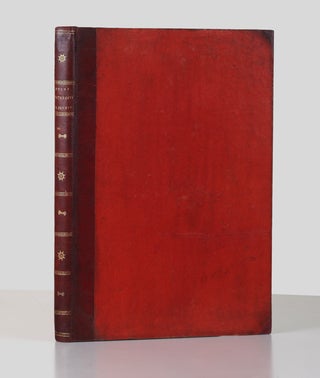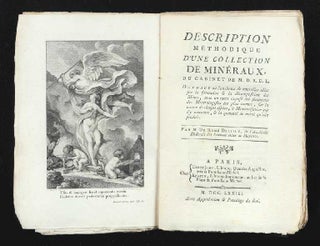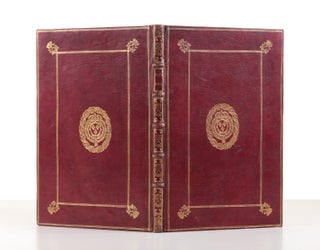Fermat’s Works; François Arago’s Copy
Varia Opera Mathematica...accesserunt selectae quaedam eiusdem Epistolae, vel ad ipsum à plerisque doctissimis viris Gallicè, Latinè, vel Italicè, de rebus ad Mathematicas disciplinas, aut Physicam pertinentibus scriptae.
Woodcut vignette on title, two engraved headpieces, five folding engraved plates, & woodcut diagrams in the text. 6 p.l., 210, [3] pp. Folio, early 19th-cent. half red morocco & red boards (minor browning), flat spine gilt. Toulouse: J. Pech, 1679.
First edition, and now rare on the market; this copy belonged to Dominique François Jean Arago (1786-1853), the great French scientist who made important contributions to astronomy, electro-magnetism, and optics (see D.S.B., I, pp. 200-03).
This book, Fermat’s only substantial publication apart from his edition of Diophantus (both prepared and published posthumously by his son), contains the majority of Fermat’s mathematical work. Included are Fermat’s important researches on analytic geometry, developed concurrently with, but independently of, Descartes, as well as his method of maxima and minima, based upon which some have proclaimed Fermat the true first discoverer of the differential calculus. It also includes the first printing of Fermat’s important correspondence with Pascal which founded the modern theory of probability. There is also correspondence with other contemporary mathematicians, including Mersenne, Roberval, Wallis, Digby, and Gassendi. Although Fermat published practically nothing during his lifetime, his work was freely communicated to others in correspondence and was profoundly influential. Descartes and Pascal notwithstanding, many scholars regard Fermat as the greatest of all 17th-century French mathematicians.
Fermat (1601-65), was shy of publicity and reluctant to communicate his findings. As a result, his discoveries remained comparatively unappreciated until the 19th century when they catalyzed the development of modern algebra.
The title-page is in Horblit’s second state (no preference), while leaves a2 and e2 are in his first state (no preference).
The rare portrait of Fermat, not present here, was also not found in the Horblit, Honeyman, or Norman copies. A small minority of copies have the portrait; it was printed in a much larger format than the book and was probably intended only for large paper copies, of which a few survive (e.g. one of the two BL copies).
A very good and crisp copy. With the signature of Arago on the title-page (his sale, Paris, 1854, lot 824 “in-f. dem. m. r.”) and with a slightly later note of an English collector “From the Library of F. Arago, H.S.”
❧ Dibner, Heralds of Science, 108–“The above, published after his death, first presented his work and correspondence.” En Français dans le Texte 115. Evans, Exhibition of First Editions of Epochal Achievements in the History of Science (1934), 6. Horblit 30–“Fermat is considered the father of the modern theory of numbers, and herald of differential calculus and analytical geometry.”.
Price: $150,000.00
Item ID: 3105






